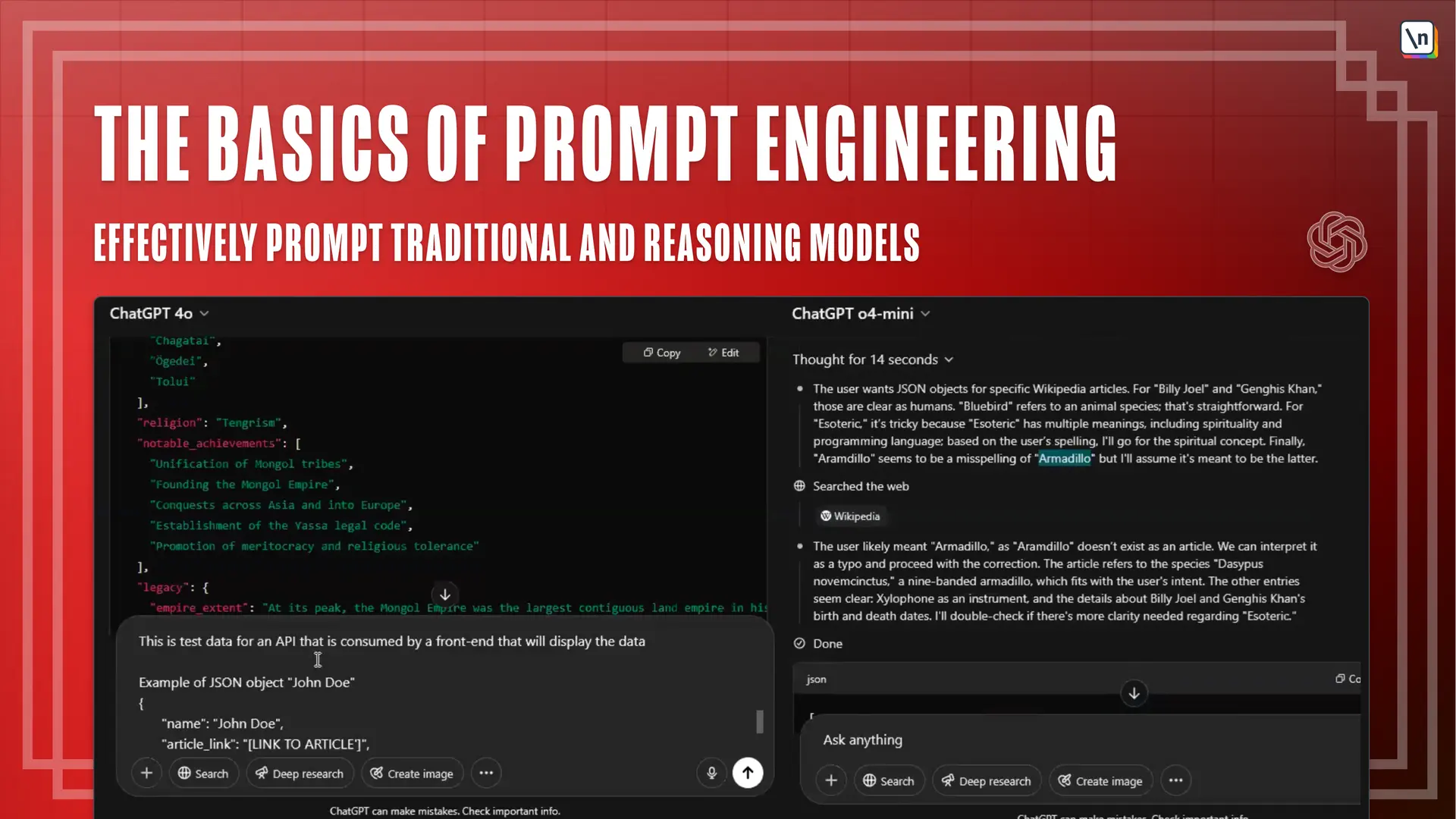Reasoning Model Example
This lesson preview is part of the The Basics of Prompt Engineering course and can be unlocked immediately with a \newline Pro subscription or a single-time purchase. Already have access to this course? Log in here.
Get unlimited access to The Basics of Prompt Engineering, plus 80+ \newline books, guides and courses with the \newline Pro subscription.

[00:00 - 00:12] I'm going to run the same prompt that we did for Wikipedia through a reasoning model now, just to kind of show you what it does differently. So we're going to take the same prompt.
[00:13 - 00:22] We're going to edit it a little bit. We're going to select one of the reasoning models.
[00:23 - 00:36] So we're going to say, oh, for a mini, because those three can take a little bit of time. So let's do our prompt again.
[00:37 - 00:51] So we're going to get rid of Rol, because I don't think it's as important for reasoning models, because it's much more task. OK, clear goal, details of the goal.
[00:52 - 00:56] We have our format. Every JSON object must have a following fields.
[00:57 - 01:02] It'll be cool. And we're giving our context.
[01:03 - 01:06] We're giving our example. Let's give some warnings as well.
[01:07 - 01:34] Sure that each JSON object is valid and has no errors. It was actually pretty good the first time, but let's do it as well.
[01:35 - 01:48] And sure, but none of the mandatory fields are blank, because it's a reason why we're going to give it a little bit more work to do. Let's give it something a little bit more esoteric.
[01:49 - 01:52] The word esoteric. Why not?
[01:53 - 02:01] Armadillo, Xylophone. Yes, I am just picking my favorite words.
[02:02 - 02:11] All right, so to rest, because we're Xero, and we cover a lot of bases, not a whole lot has to change. But let's just see how it goes through.
[02:12 - 02:15] Our expected results will be quite similar. It'll take a little bit longer.
[02:16 - 02:25] Yeah, I mostly did this to show you the reasoning steps that goes through. OK, it was 14 seconds.
[02:26 - 02:32] We can see the breakdown here, right? So we can actually see step by step what's happening, which is one of the coolest features of reasoning models, right?
[02:33 - 02:42] So here it's basically summarizing what the user actually wants. And it's actually preempting that some of the words are going to be difficult.
[02:43 - 02:53] But esoteric has multiple meanings, spiritually programming language. So here it's making a decision that will go through the spiritual concept.
[02:54 - 03:02] So we can actually see exactly where we could have given more detail and more specificity. Armadillo was, in fact, a misspelling.
[03:03 - 03:10] I did not do that on purpose, but it called the misspelling, right? So you can see the strength of it going through things.
[03:11 - 03:15] One by one here, it's going over. It's still summarizing this.
[03:16 - 03:19] And there was a bit where it searched Wikipedia. And we get our object.
[03:20 - 03:31] So we get Billy Joel, Genghis Khan, Bluebird, same way as we did before. And so, Tarek has the mandatory fields and nothing else, because we did not specify it.
[03:32 - 03:46] Armadillo, we get animal, we get the Latin name, we get the genus, and Xylophone correctly gets put to other. But again, one of the coolest things is being able to see this kind of chain of thought reasoning.
[03:47 - 03:50] And yeah, that's all that I had.